#Belle Époque Fashion
Text

1908 (September) Les Modes - Robe d'interieur par Paquin - photo by Reutlinger. From gallica.bnf.fr; fixed spots & flaws w Pshop 1386X2081.
#1908 fashion#1900s fashion#Belle Époque fashion#Edwardian fashion#Paquin#Reutlinger#house dress#headband#pouter pigeon bodice#coat#three-quarter length sleeves#flared sleeves
418 notes
·
View notes
Text
Etiquette of the Edwardian Era and La Belle Époque: How to Dress
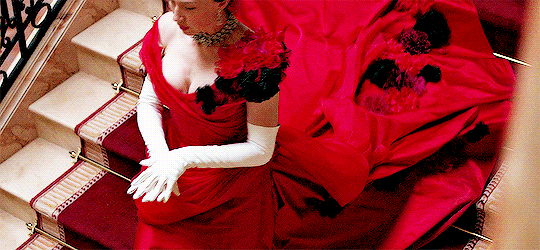
This is a new set of posts focusing on the period of time stretching from the late 19th century to the early 20th Century right up to the start of WWI.
I'll be going through different aspects of life. This series can be linked to my Great House series as well as my Season post and Debutant post.
Today will be focusing on the rules of clothes with this time period.
A Cut for Every Occasion
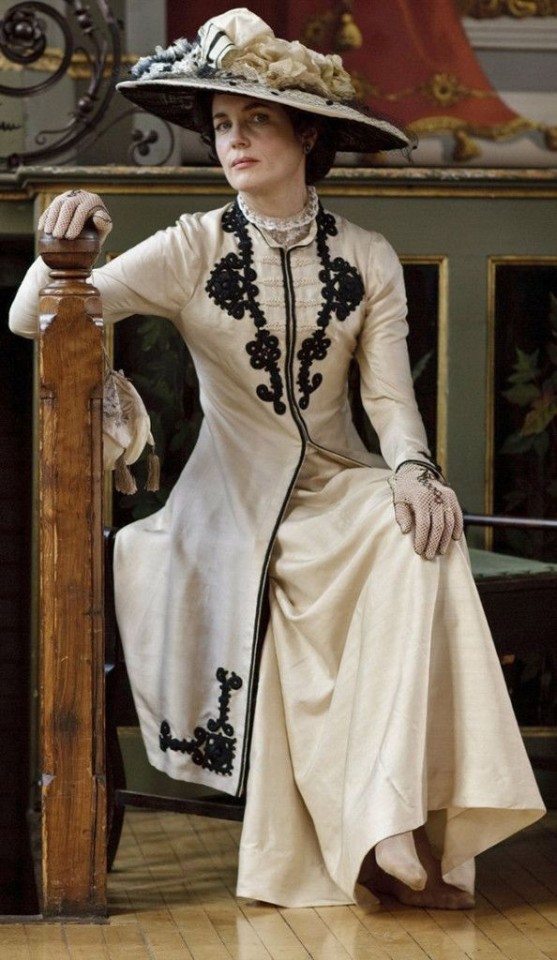
As you may know, the wealthy elite and their servants lived extremely regimented lives and every aspect was governed by careful rules. They would be expected to wear the right outfit at the right time, every minute of the day. Any misstep would be noticed at once and be subject to scruntiny.
In the circles of the elite, one would be expected to change for every occasion. One simply wouldn't wear the same outfit they've been lying around the house in to attend tea at somebody's house. Fashion in this era was dictated by the clock and by the event diary of the wearer.
Ladies

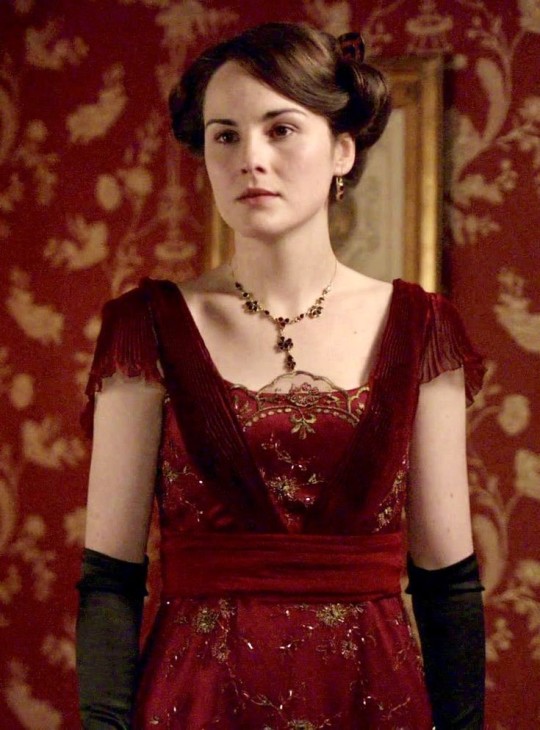
Women of the upperclass would be expected to change at least six times a day. When she would rise for a morning of repose around the house, she would simply wear a house gown or a simple blouse and skirt. If planning a morning stroll, she would change into a walking suit which is a combination of blouse, skirt and jacket along with her hat usually of tweed. If running errands or paying a visit to friends, she would wear another walking suit. If riding, she would wear a riding habit and a hat. If hosting tea or taking tea in her own home, she would change into a tea gown with is a lighter more airier gown more comfortable for chilling in. If attending a garden party, one wears a pastel or white formal day gown accompanied by a straw hat and gloves. For dinner, she would change into an evening gown which would be more elaborate and show off a little more skin than her day wear. After dinner and ready for bed, she would change into her nightgown.
Female servants had an easier time of it. A housekeeper and lady's maid would simply wear a solid black gown for the entire day. A cook and kitchen maids would wear a simple day dress for working with an apron. Housemaids would usually wear a print dress with an apron and cap, changing into the more formal black and white attire you would associate with a maid.
Gentlemen


The gentlemen had an easier time but they too were subject to changes throughout the day. Men were expected to wear a suit. The most popular day time suit was a sack suit. These were comprised of plain and loose fitting jackets, worn over a starched shirt with a high collar, waistcoat and straight trousers with ironed creases. These suits were exclusively wool with cheaper ones made of a wool and cotton blend. Grey, green, brown, navy were usual but sine younger men preferred louder colours such as purple which was a trend for a time in the 1910s. These suits were worn about the house or in the city accompanied by a coat. Men would change into tweed if shooting or walking. For garden parties, a gentleman would wear a light coloured suit, usually white and a straw hat. For dinner, a man had two choices: his tails or his dinner jacket. A dinner jacket was for less formal suppers say if dining at home. This was a collection of a jacket, trousers, waistcoat, a bow tie, a detachable wing-collar shirt and black shoes. Lapels of these jackets were edged with silk or satin. Tails were worn at a formal dinner party, at White Tie events. This was made up of a tailcoat, white piqué waistcoat, a starched dress shirt with a pique bib and standing wing collar with a white bow tie. Trousers were lined with trim to hide the seams.
Male servants were soared changing. Footmen would wear their livery around the clock which would resemble white tie to a certain extent or mimic court dress of palace servants. Butler's would wear a variation of a gentleman's evening suit throughout the day. When a male servant is dressed, he usually stays that way. However, a valet or a footman may be taken to pick up during shooting parties where they would wear tweed walking suits.
Jewellery
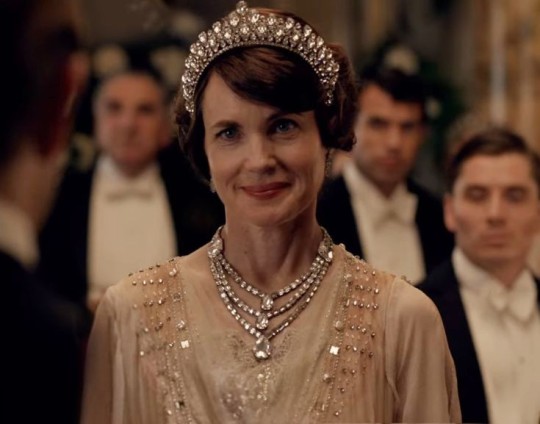
Jewellery was an important sign of status in society. Upperclass women of this time has access to untold caches of sparklers but there were rules concerning their use and meaning. Earrings were usually clip ons as women of high status would not pierce their ears. Simple, understated earrings were worn during the day with more ostentatious sets were worn in the evening time. Broaches were popular at this time, usually worn at the throat of a gown or blouse or walking suit or affixed on hats. Large stoned rings were worn over gloves while slender bands were worn under. Jewellery was intricate and understated amongst old money whole the nouveau riche went for chunkier stones and larger settings. Tiaras were only worn at White Tie events, held after six pm and almost never by unmarried girls. One would not wear a larger tiara than that most senior lady present. Men would wear tie pins, cufflinks and pocket watches to match any occasion be it for a jaunt on the town or at a formal evening party.
Hats
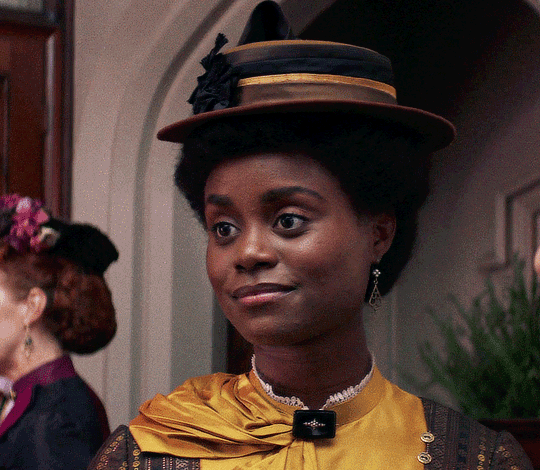
Hats were a staple in this period. Anybody respectable from any class wouldn't venture out of the door without a hat.
Men would wear hats when heading out but always remove them when entering a building, and never wear one without removing it for the presence of a lady. The bowler was seen as more a servant's headwear while a top hat was reserved for gentlemen. Flat caps would be only seen on gentlemen at shooting gatherings or in the country, they were popular among the common class for any informal occasion.
Women had more stricter rules concern hats. Hats for women were more a day accessory worn while out and about. A woman would not wear a hat in her own home even when entertaining and nor would any of the other female occupants if joining the gathering. A woman would not remove her hat when attending a luncheon or tea or any activity. Hats were held in place by a ribbon or sash tied under the chin or by a hat pin, which is essentially a large needle thrust through the hair. This was the period where women's hats became more ornate and rather large, leading to some critisism. Among servants, housekeepers and lady's maids would not wear a hat while indoors and working but a housemaid or cook or kitchen maid would cover their hair with a cap with housemaids changing into a more elaborate one come evening time. Male servants would not wear hats unless travelling or outdoors.
Gloves

Gloves are a staple in this period and worn only at the opportune time. Among servants, only footmen would wear gloves and usually only when serving. Butlers would never wear gloves. Female servants did not wear gloves.
Men did wear gloves, usually woollen or leather while outside or riding gloves when out on horseback.
Women wore gloves whenever outside. Day gloves were usually wrist length, with evening gloves stretching to the elbow. During dinner, evening gloves would be removed at the first course and laid across the lap, replaced at the last course when the ladies leave for tea and coffee after where the gloves are then removed again. Gloves are always worn when dancing and at the theatre or opera. If one is sitting in ones box and sampling some chocolate, one can remove their gloves for that.
Hair and Makeup
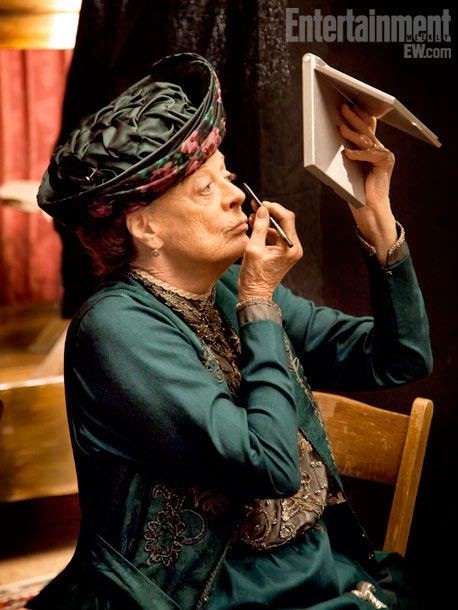
Make up was a no-no amongst the upper crust and for their servants in England and America, as it was seen as licentious but in France, the use of rouge was accepted. Perfume and cologne were acceptable but excessive use was frowned upon.
Hair was dressed by one's lady's maid. Bouffant updos were popular in this time period for married women. During the last years of this period, women began adopting the 'bob' but this was seen as radical and sometimes scandalous. Unmarried girls could wear their hair down, often with accessories like a bow to adorn their tresses. Servants would always tie up their hair and never be seen with it down or uncovered (though this depended on their job).
Men would comb their hair, slicking it back for dinner. Most men were clean shaven but if they wore beards, they were usually well groomed. Hair was kept short for grown men and teenagers but young boys may wear their hair longer whilst in the nursery.
#This bitch loooonnnnggg#Etiquette of the Edwardian Era and La Belle Époque series#Fantasy Guide#Early 20th Century#late 19th century#Great houses#writing#writeblr#writing resources#writing reference#writing advice#ask answered questions#writing advice writing resources#writers#Writing advice writing references#Writing references#Historical fiction#1900s#1890s#Fashion
575 notes
·
View notes
Photo


Mme Chamas, 66 Rue des Petits Champs, Paris
day dress
France, 1890-1892
451 notes
·
View notes
Text
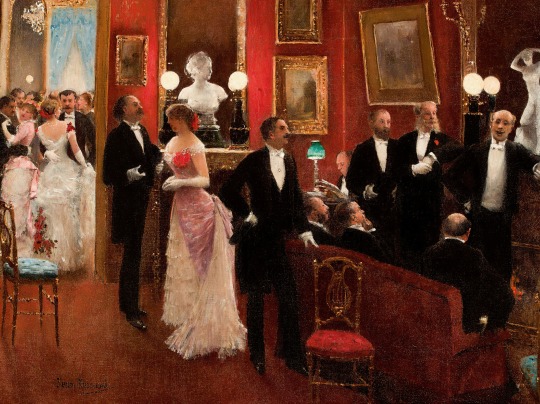
Scène Du Bal
Jean Béraud
#Jean Béraud#french art#edwardian#1900s#early 20th century#art#painting#art history#fashion#party#ball#Belle Époque
179 notes
·
View notes
Note
out of curiosity i listened to steampianists ‘the botanist’ that you talked about in the tags of my last ask…it really is perfect for rollo. my god. i can imagine him going to great lengths to ensure his love blooms with his darling. if you ever write that fic ill print it out and tape it to my walls. rollo and the two? fics youve written live rent free in my brain and im composing a playlist for him now. i am. in deep.
-pot roast brain anon from a couple days ago
Pot roast anon, hello!!!!!! >w< omg I'm so happy you listened to the song and agree that it suits Rollo!!! The story is so eerily visceral. I love it so much. "The Detective" is the sequel to "The Botanist" and it involves the singer (the detective) trying to solve the murders committed by the botanist, but in the process he's interrupted by the scientist from "Black Hole" after she brings on the end of the world with her experiment! I adore Steam's work. Every song is so good. orz
I love these lyrics from "The Botanist":
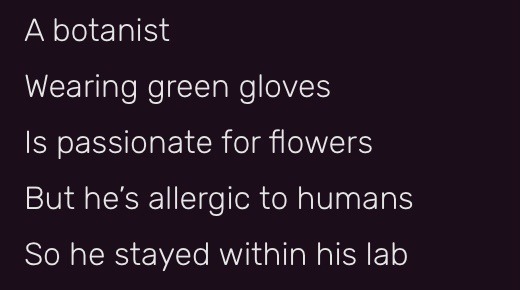
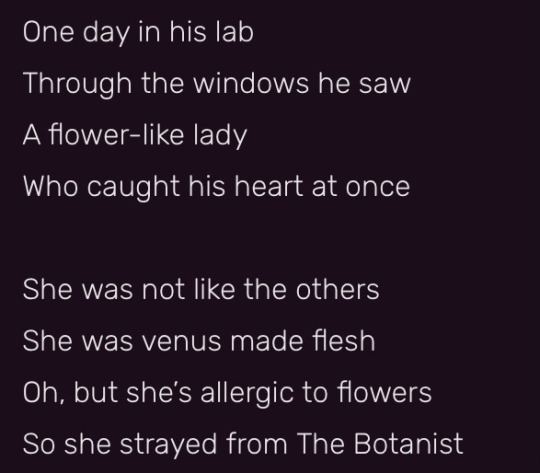

A lady who is allergic to flowers and a botanist who is allergic to humans,,, waaaa it's such a yummy concept!!! Rollo who is allergic to humans (magic) falling for a darling who is so in tune with their magic...... and the way the gloves go from green to red over the course of the song, indicating that something dire happened to the lady (it's revealed in "The Detective" that the botanist would remove the hearts of the women he kidnapped). The symbolism in making someone or something bloom. Rollo whose talent is literally gardening. Rollo who cared for and grew the Crimson Lotus........ I LOVE HIM SO MUCH. OTL he really does feel like the botanist character in the song.
ALSO!!!! The way the lyrics transition from "passionate for flowers" to "passionate for a flower." Going from plural to singular as this flower (the lady) fills the botanist's heart with some sort of crooked adoration. A darling couldn't fix Rollo. In fact, you would just make him worse (more obsessed) unintentionally. >_< I really want to write a fic inspired by this song for Rollo!!! It suits him so well. I'm happy you would want to read a fic like that!! <3
I've only written three fics for Rollo so far (The Diary of Rollo Flamme, Eden, and Crow & Goat in Courtship), but it's not nearly enough. He was so crazy during his confrontation with Malleus, Idia, and Azul in Glomas. The way he actively tried to strike Malleus down????? AAAAAAA. Unfortunately, Rollo will indeed strike him down in the dead dove fic I have planned. ;;;; he's scary,,,,
I think "The Botanist" could also suit Jade if I'm writing him as the clinically detached type (like in Monops's Reflection), but I need to get the eels out of my brain. T^T
#twisted chit chat#forgive me for rambling excessively orz#i really love steampianist's music :D the song 'tiny fiends' also reminds me of rollo to an extent#if i wrote 'the botanist' fic for rollo i would like to write it in the belle époque era#mainly because the fashion of that era is beautiful and feels very flower-like to me (perfect for a certain botanist (rollo) to notice you)
38 notes
·
View notes
Text

We had a lovely night at the ball! And here's the (almost) finished dress! I also made Husband's waistcoat and tie. I was still sewing the day of the event and we arrived very late. 😆. But it was totally worth it. (The drink in the lower left corner is a cocktail made with absinthe and champagne, and was garnished with fresh violets)
110 notes
·
View notes
Text
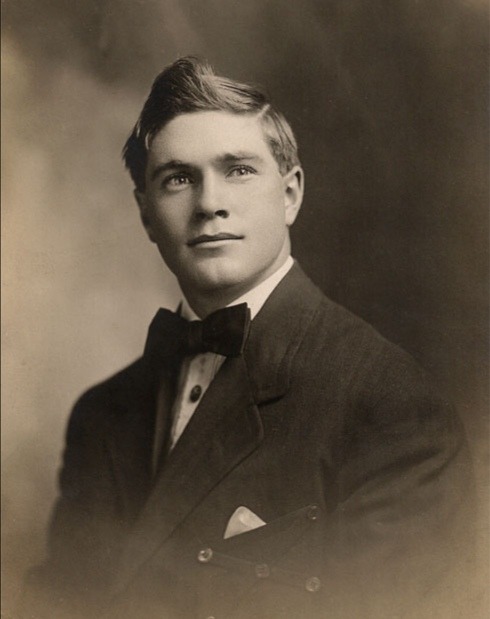
Photograph of a man identified as C. H. P., c. 1910's.
(Source : Bowlers and High Collars)
#history#old photography#19th century#antique photography#antique#old photograph#1900s#1910s#antique portrait#early 20th century#edwardian boyfriend#edwardian#edwardian era#belle epoque#elegant#edwardian fashion#fashion history#vintage#belle époque
183 notes
·
View notes
Photo

Pierrots & Pierrettes Fin de Siécle, Paris, c. 1890s
#Belle Époque#La Belle Époque#1890s#19th century#paris#france#europe#watecolor#historical fashion#women#men#children#boys#girls#pierrot#pierrette#clowns#commedia dell'arte#families#fancy dress#costumes
30 notes
·
View notes
Photo

Costumes Parisiens fashion illustration No.76 from ‘Journal des dames et des modes’ (1913) - Robe de jardin en toile bleu by Marie Madeleine Franc-Nohain (1879–1942).
Wikimedia.
34 notes
·
View notes
Text
currently in the trenches trying to make some historical characters in dress-up games
#''belle epoque fashion dress up game'' i don't know what time period this looks like but it is NOT la belle époque!!#parts of it are vaguely edwardian and that's all..!
3 notes
·
View notes
Text
1908 (August) Les Modes - Toilettes de Bourniche robe directoire - photo by Paul Boyer & Bert. From gallica.bnf.fr; fixed flaws & spots w Pshop 739X1888

#1908 fashion#1900s fashion#Belle Époque fashion#Edwardian fashion#Bourniche#Paul Boyer & Bert#evening dress#chemise#scoop neckline#elbow-length sleeves#close under-skirt
169 notes
·
View notes
Text
Some more Lies of P translation notes!
Some cool translation details that I thought were fun that didn't fit anywhere else.
[long!]
[Spoilers]
In the Korean version, Geppetto is speaking an "old-fashioned"/archaic form of Korean to reflect the time period that the game is set in
Set around the turn of the century (late 1800s), mimicking the Belle Époque of France's industrial revolution, we can guess that the game's events take place during the late 1800s. Given Geppetto's status as "old geezer", we can guess that he's closer to 100 than not, so he would have been born around the early 1800s. I might not be completely accurate - basically, he's speaking as an elderly person might speak in current time to culturally reflect his age; other times I notice he's using some words that are now out of use.
From the game's initial trailer:
깨어나거라, 아들아.
이제 이 아비를 기쁘게 해다오.
Wake up, son.
Make this father happy/proud.
The word he uses for "father" is "Abi" (아비), which is an archaic word for "father". In current day, korean speakers would generally use "Abeoji" (아버지).
The -gura(거라)/-DaOh(다오) conjugation is also an additional syllable that has since fallen out of use, or is considered archaic, in current korean:
아들아, 네 심장을 다오.
Son, give me your heart.
하지만 알아 다오, 나는 너도 사랑했단다.
But know this, I loved you too.
English VA version: In my own way, I grew to love you.
This is also apparent in Geppetto's final letter at the end:
우릴 방해할 자는 이제 없을 거란다.
너를 위한 크라트를 다시 만들어주마. (-juma, Supposedly, only a "superior" speaker can use -juma)
그때까지 호텔에 조심해서 머물러 다오.
너를 누구보다도 아끼는 아버지가.
He also uses the -Oh ending again. (although he does call himself "Abeoji" 아버지 here and not "abi" like the trailer. He uses "Abi" again in another instance when responding to a guesture)
It's a very cool detail to me. I think it's a bit missed opportunity that, as far as I know, the english version doesn't seem to reflect this! Although to be fair, I'm struggling to imagine how they would. 19th century english/french maybe isn't as different or isn't different in the same ways from "modern" english that 19th century Korean would be from "modern" Korean. [Well, my only education on this stuff is from watching episodes of Dae Jang Geum]. I haven't checked to see if any other character (like Antonia) speaks this way. [Pls message me if Geppetto also speaks like this in your or any other language version!!]
Lies of P, Blood, puns, and the P-Organ

The P-Organ, in Korean, is referred to as the P기관. 기관 (gi-gwan), however, doesn't necessarily correlate directly to the word "Organ": It's quite an interesting word to choose because it can refer to any system of moving parts, both organic or mechanical; and it can mean an organ, a machine, or even a governmental body or institute.
As you may have heard by now, the game's titular pun revolves around the fact that the english character for P sounds the word for "blood" in korean (피), making the title (P의 거짓 P-ie Geojit?) read like Lies of Blood, in a nutshell. The title Lies of Blood then fits into the becoming-real flesh-and-blood themes of the game, perhaps also suggests that the deception in Krat has cost the lives of many - and, of course, references the lying of the titular character, who is inferred to be none other than (P)inocchio! So, in Korean, the P-Organ (P기관) becomes something like the Blood Engine. Which rather sounds like a euphemism for a heart!
[Perhaps: It's also a bit of narrative that Geppetto refuses to refer to it as our heart, unless he refers to it as belonging to Carlo.]
In English, this wordplay no longer exists, and so it's rather awkwardly literally translated (as the P-Organ).
How do you say, "NEOWIZ"?

I've seen a few people ask about the pronunciation of NEOWIZ (Lies' publishing company). Hangul is phonetic, so you could (technically) say the official pronunciation of NEOWIZ (네오위즈) is Nae-Oh Wiz and not Neo (like the Matrix character) -wiz.
However [in my opinion], I don't think this matters, because when something is translated to another language, it often takes the pronunciation of the language it is read in. Kind of like how in english you would read the capital of France correctly as Paris (with an S sound at the end), and not "Pari" (french pronunciation).
Also, Krat is consistently pronounced by in-game characters as "Krot" (Long O, rhymes with "Cot" or "Not") in the english version. In the game korean releases, "Krat" is written as 크라트, which would be pronounced and read as "Krat" (short A, rhymes with "Rat" or "Cat").
[I think the devs also say "Krat" too. The rounder "O" pronunciation of "A" in words seem like more of a European pronunciation in general]
The "Youngest of the Black Rabbit Brotherhood" and Gender

In Korean culture, Age is particularly significant in both Korean social hierarchy and language, and the role/position of being the youngest in a group is a particular role known as being the "maknae" (I mean, I definitely think this also exists in the western world, people definitely would understand being the "youngest" one in your family, but it's slightly different from that).

Despite being a member of the brotherhood, she refers to her brothers as "Oppa", which is when the word "brother" is used by female speakers to an older male subject (Remember Gangnam style?) [A male speaker would use "Hyung". I debated putting this one in, because to me, it seemed kind of obvious, but I did see others asking about this.]
[Given that the developers are from a korean studio, I am choosing to believe that the subtitles provided by the game's "korean" version are the text/script as originally written intended by the developers!]
#lies of p#liesofp#lop#thanks for reading#I hope ppl enjoyed#im not sure how interesting this is to other ppl!! but its neato to me#translation#translations#localization#korean#spoilers#lies of p spoilers#p machine p engine p system... all of it sounds worse lol#neowiz#also... maybe geppetto being the only one speaking in that archaic way shows that he is stuck in the past? idk
53 notes
·
View notes
Text
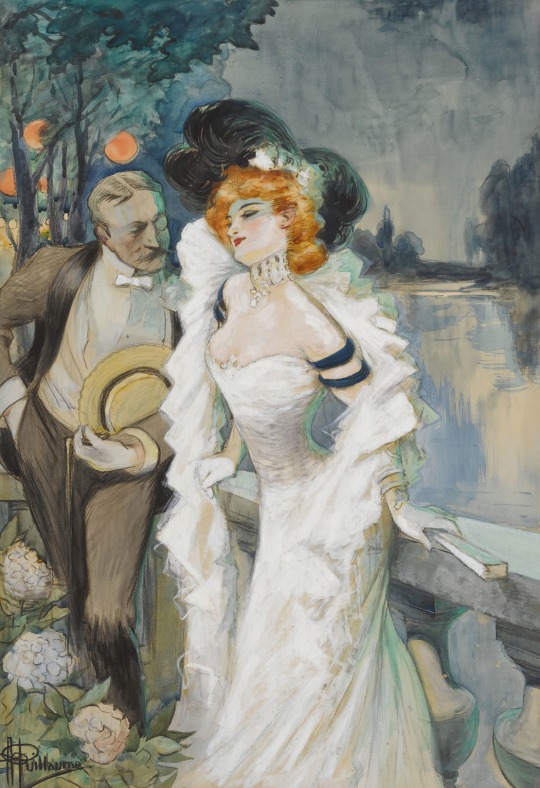




Belle Époque illustrations by Albert Guillaume
#Albert Guillaume#french art#art#painting#art history#fashion#paris#1900s#early 20th century#Belle Époque#illustration
269 notes
·
View notes
Text
Why I hedcanon Phil as goth .
Fist he deserves it slayyyy and also I wanted the older feel for him you know being immortal an all.
And since I gave missa a Pinterest board an explanation I will do the same for phil.(also he's British)
Missa dose his make up these days.(lots of kisses)
(why is there an image? there is a lot of variations of goth)
Goth is driven by music that originated in the UK during the early 1980s. Was spread by fans of gothic rock, a branch off of post-punk music genre. Post-punk artists who presaged the gothic rock genre and helped develop and shape everything are Siouxsie and the Banshees, Bauhaus, the Cure, and Joy Division.
Fashion is based off of 19th-century Gothic fiction and from horror films. The scene is centered on music festivals, nightclubs, and organized meetings. The subculture has associated tastes in music, aesthetics, and fashion.
The genres goths listen to are gothic rock, death rock, cold wave, dark wave, and ethereal wave.[1 The Gothic fashion style draws influences from punk, new wave, New Romantic fashion and the dressing styles of earlier periods such as the Victorian, Edwardian, and Belle Époque eras. The style most often includes dark clothes, dark makeup, and black hair.
47 notes
·
View notes
Text
Saturday (at the ball) was my first time being able to wear ALL the Edwardian clothing layers from the skin out with no modern items (including the underwear), and this was exciting for me! 😂 It was great to see and feel how it all functioned as a cohesive system! Having garter straps attached to the bottom of the corset not only kept my stockings up, but made sure my corset was always tugged down and kept it from riding up into my ribcage, and it was the most comfortable it's ever felt! The frilly drawers (knee-length, flared underpants, haha), a starched petticoat with tucks and a double flounce, and a skirt lining with more ruffles not only gave the dress a great amount of flare at the hem (for that great Art Nouveau "lily" shape!), but kept the skirt from getting tangled around my legs as I walked or danced! The outfit was, on the whole, surprisingly easy and fun to move in. (The exceptions might be my left shoulder straps, which I made slightly too short and kept popping the safety pin holding them up (I told you the dress was "ALMOST done!" 😂), and the stockings, which were uncomfortably binding at the top around my legs- but that's a problem with the way the reproduction stockings were constructed, and fixable!)
#Sewing#Belle Époque ball gown#Fashion history#Historical costuming#I get excited about weird things haha
27 notes
·
View notes